Weihao Mao
Multi-Waveguide Pinching Antennas for ISAC
May 30, 2025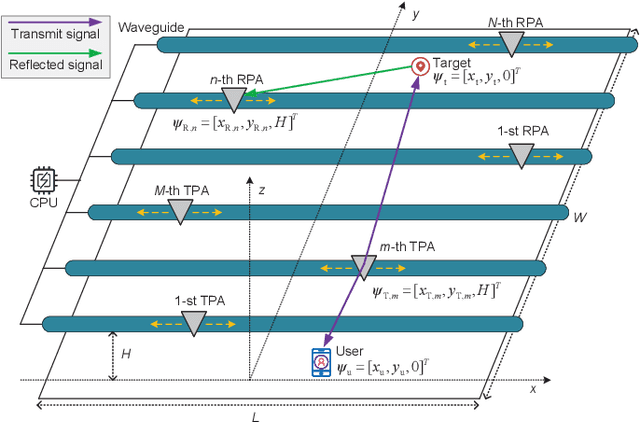
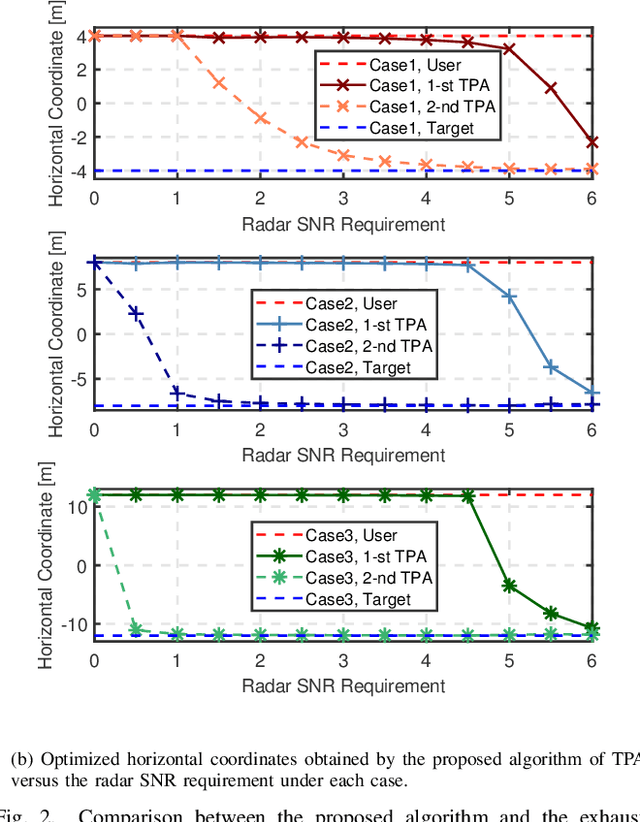
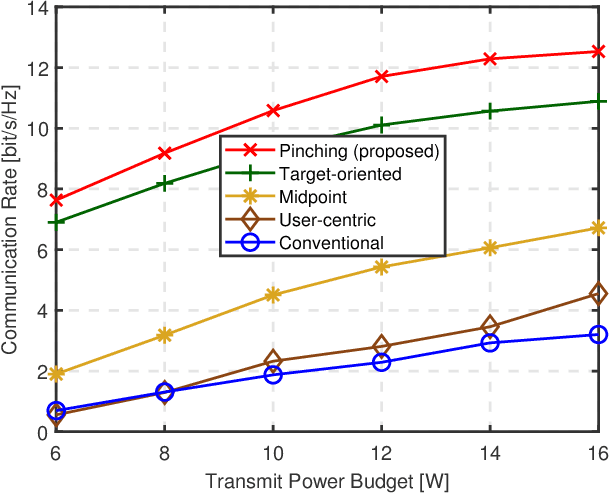
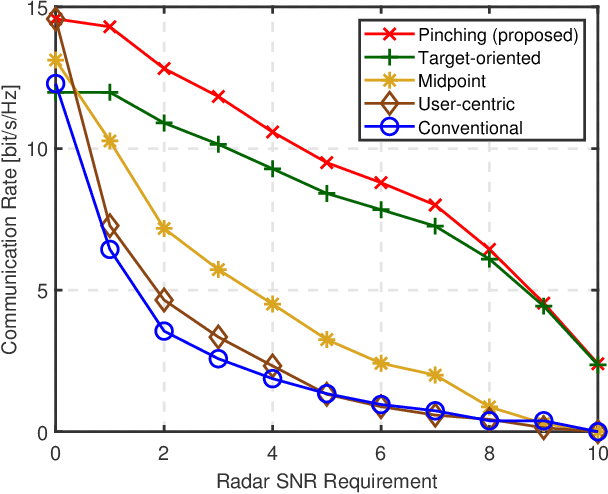
Abstract:Recently, a novel flexible-antenna technology, called pinching antennas, has attracted growing academic interest. By inserting discrete dielectric materials, pinching antennas can be activated at arbitrary points along waveguides, allowing for flexible customization of large-scale path loss. This paper investigates a multi-waveguide pinching-antenna integrated sensing and communications (ISAC) system, where transmit pinching antennas (TPAs) and receive pinching antennas (RPAs) coordinate to simultaneously detect one potential target and serve one downlink user. We formulate a communication rate maximization problem subject to radar signal-to-noise ratio (SNR) requirement, transmit power budget, and the allowable movement region of the TPAs, by jointly optimizing TPA locations and transmit beamforming design. To address the non-convexity of the problem, we propose a novel fine-tuning approximation method to reformulate it into a tractable form, followed by a successive convex approximation (SCA)-based algorithm to obtain the solution efficiently. Extensive simulations validate both the system design and the proposed algorithm. Results show that the proposed method achieves near-optimal performance compared with the computational-intensive exhaustive search-based benchmark, and pinching-antenna ISAC systems exhibit a distinct communication-sensing trade-off compared with conventional systems.
Communication-Sensing Region for Cell-Free Massive MIMO ISAC Systems
Jul 30, 2023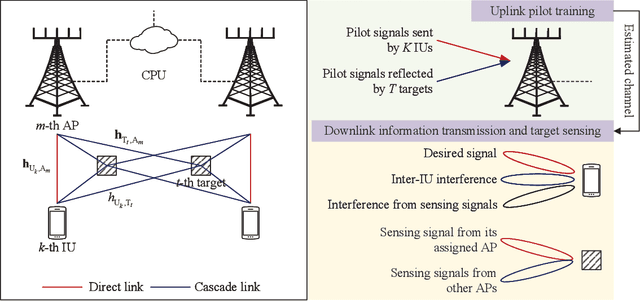
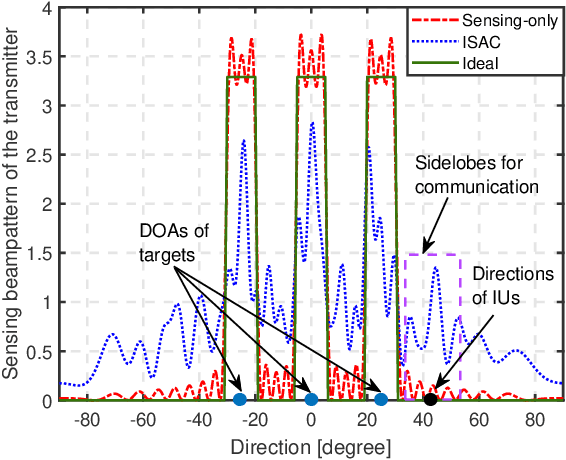
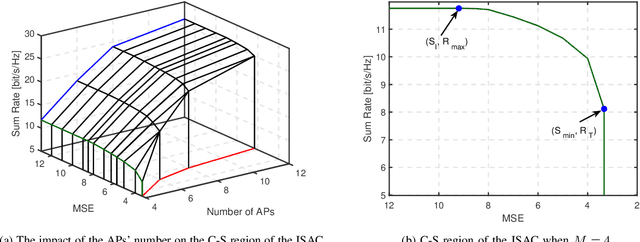

Abstract:This paper investigates the system model and the transmit beamforming design for the Cell-Free massive multi-input multi-output (MIMO) integrated sensing and communication (ISAC) system. The impact of the uncertainty of the target locations on the propagation of wireless signals is considered during both uplink and downlink phases, and especially, the main statistics of the MIMO channel estimation error are theoretically derived in the closed-form fashion. A fundamental performance metric, termed communication-sensing (C-S) region, is defined for the considered system via three cases, i.e., the sensing-only case, the communication-only case and the ISAC case. The transmit beamforming design problems for the three cases are respectively carried out through different reformulations, e.g., the Lagrangian dual transform and the quadratic fractional transform, and some combinations of the block coordinate descent method and the successive convex approximation method. Numerical results present a 3-dimensional C-S region with a dynamic number of access points to illustrate the trade-off between communication and radar sensing. The advantage for radar sensing of the Cell-Free massive MIMO system is also studied via a comparison with the traditional cellular system. Finally, the efficacy of the proposed beamforming scheme is validated in comparison with zero-forcing and maximum ratio transmission schemes.
Energy Consumption Minimization in Secure Multi-antenna UAV-assisted MEC Networks with Channel Uncertainty
Feb 19, 2023Abstract:This paper investigates the robust and secure task transmission and computation scheme in multi-antenna unmanned aerial vehicle (UAV)-assisted mobile edge computing (MEC) networks, where the UAV is dual-function, i.e., aerial MEC and aerial relay. The channel uncertainty is considered during information offloading and downloading. An energy consumption minimization problem is formulated under some constraints including users' quality of service and information security requirements and the UAV's trajectory's causality, by jointly optimizing the CPU frequency, the offloading time, the beamforming vectors, the artificial noise and the trajectory of the UAV, as well as the CPU frequency, the offloading time and the transmission power of each user. To solve the non-convex problem, a reformulated problem is first derived by a series of convex reformation methods, i.e., semi-definite relaxation, S-Procedure and first-order approximation, and then, solved by a proposed successive convex approximation (SCA)-based algorithm. The convergence performance and computational complexity of the proposed algorithm are analyzed. Numerical results demonstrate that the proposed scheme outperform existing benchmark schemes. Besides, the proposed SCA-based algorithm is superior to traditional alternative optimization-based algorithm.
 Add to Chrome
Add to Chrome Add to Firefox
Add to Firefox Add to Edge
Add to Edge